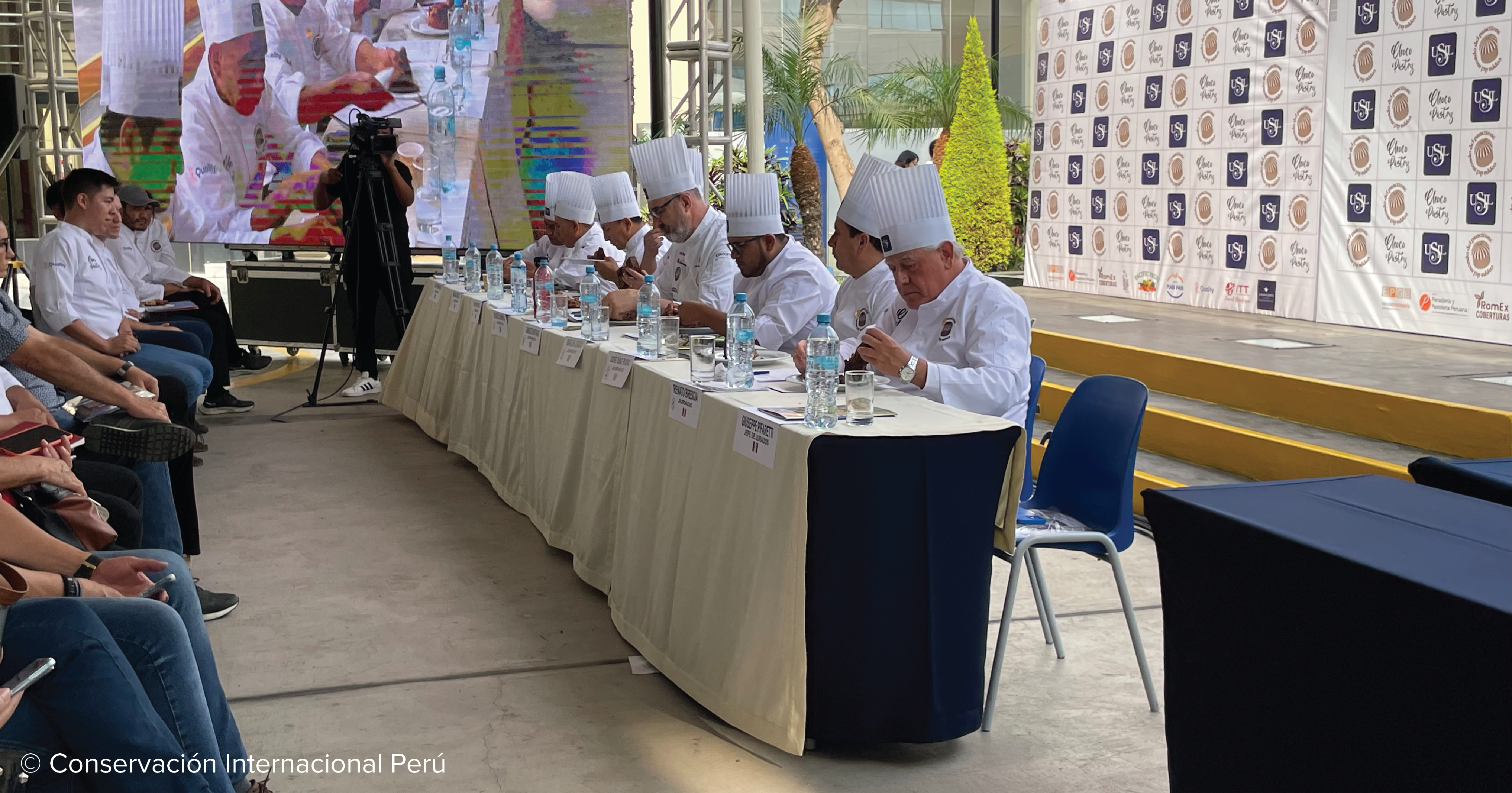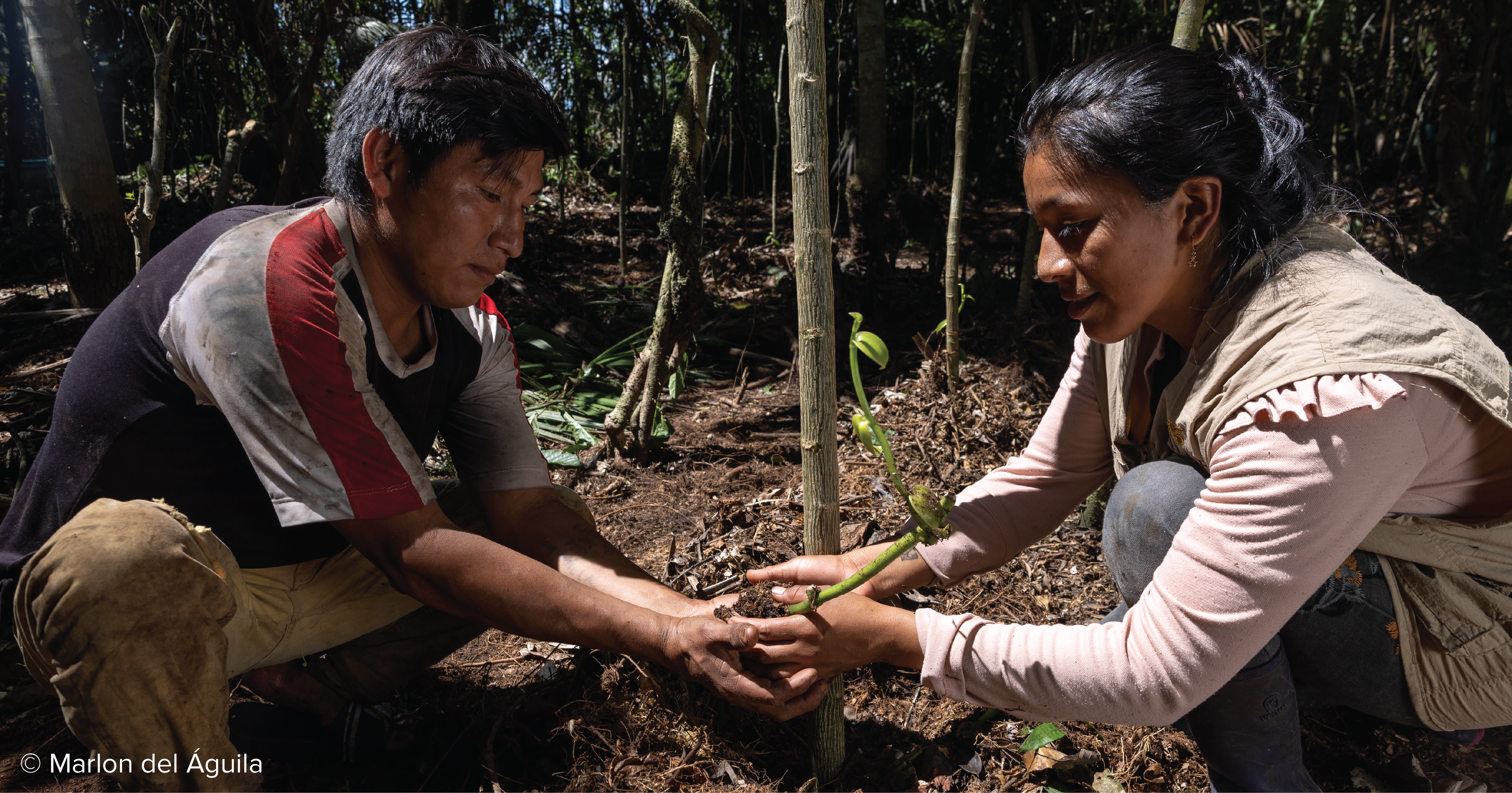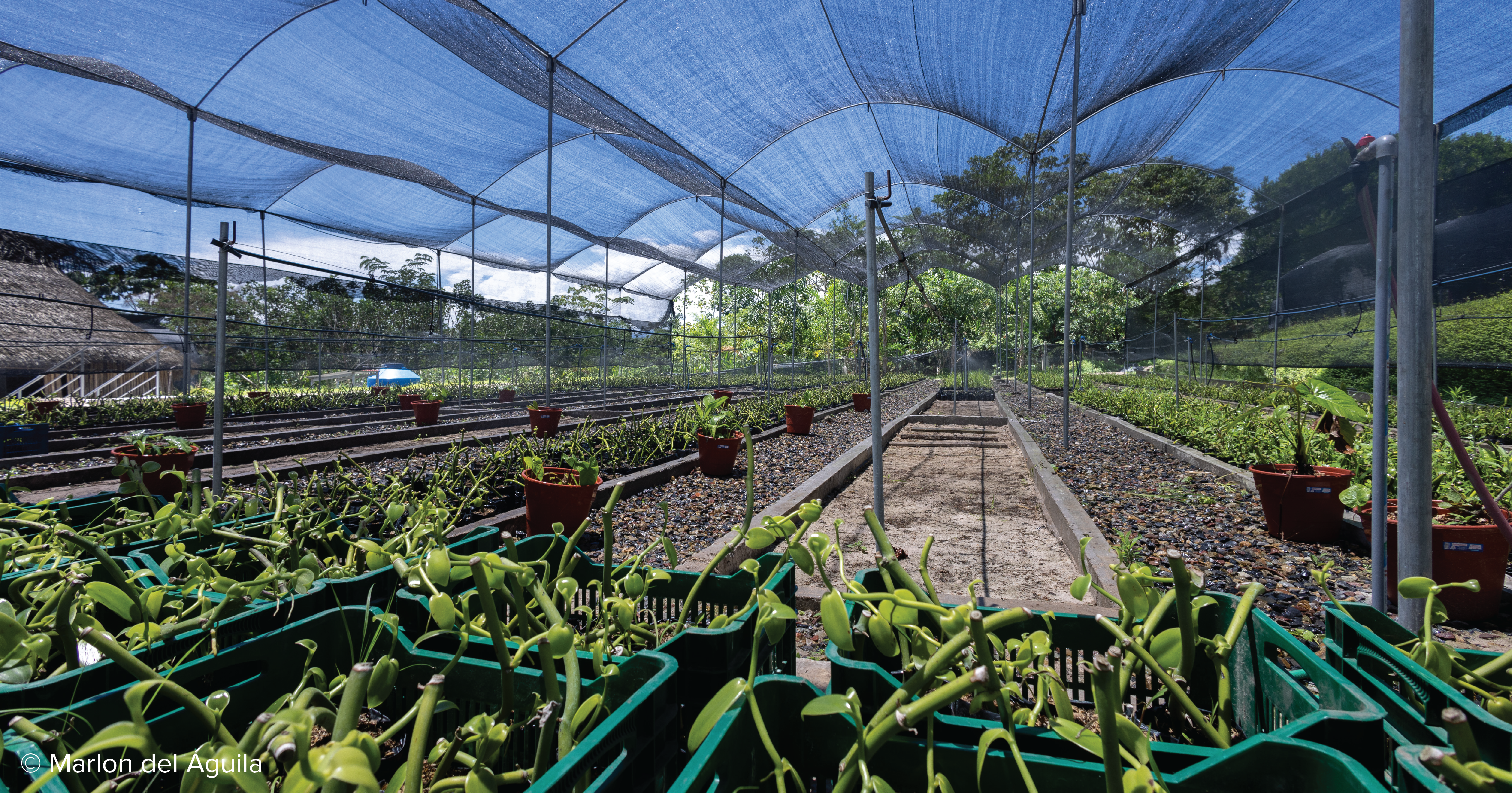How can Pannetone help strengthen indigenous forest conservation efforts?
In April, the championship "Peru's Best Pannettone" was held, a tournament that gives the winners the credentials to represent the country in the next "Panettone World Cup" in Milan at the end of the year.
There, amid white aprons and tall bakers' hats, one product caught the eyes of the tables. It was not the flour, the baking powder, nor the diversity of colors and shapes of the toppings. The unusual protagonist of the event was the large fruit of an aromatic orchid: the vanilla pompona.

Vanilla pompona is grown mainly in the San Martin region, exactly in the Alto Mayo valley. "Vanilla is the only edible orchid and is being used mainly in the gastronomic sector, especially in pastries. Vanilla enhances the aroma and flavor in each of the desserts," says Arturo Rivas of the Vanilla Peru Association - AVAIPE, who presented in the contest held in Lima, the origin, benefits and technical management of this plant in Peru.
Promotion of sustainable vanilla
It is precisely in Alto Mayo where vanilla is being promoted the most. In this part of the Peruvian jungle, the public and private sectors and local communities have been creating alliances to strengthen and promote the sustainable vanilla value chain. As an orchid, vanilla is a CITES* species and its survival was threatened.
San Martin is the first region at the national level where a vanilla technical roundtable has been established, led by the Regional Environmental Authority and partners such as Sernanp, Asociación Ecosistemas Andinos, Adecaram, AVAIPE, Conservation International, among others. The latter, together with the Federación Regional Indígena Awajún del Alto Mayo - FERIAAM, has been leading a special process in the local indigenous communities.
Tajimat Pujut (good living in Awajun) is an initiative that seeks to improve the quality of life and well-being of the Awajún population of Alto Mayo through the recovery and conservation of their communal forests. This is done through sustainable economic activities such as deforestation-free coffee and cacao, medicinal plant infusions, ecotourism and of course, the promotion of vanilla in eight Awajún communities with partners such as AVAIPE and ECOAN.

Awajún people and vanilla
"In the past, vanilla was used as a perfume, mainly by women, and sometimes at our parties it was used in the air as an aromatizer," says Tito Shimpu, an Awajún vanilla producer in the area. He adds that he was unaware of the new uses that could be given to vanilla, which still grows in natural stands** in the forests of his community.
The natural stands in Awajún communities are among the few areas where vanilla can still be found, since the aguajales and renacales where it was abundant have now been replaced by rice crops. Vanilla or sekut (vanilla in Awajún) is planted in primary forest, secondary forest (which are the purmas or abandoned farmlands), or it can also grow in agroforestry systems, aiding the recovery and conservation of forests.
"Now, thanks to vanilla, I have an extra income that helps me to support my family's economy," says a smiling Don Tito, one of the 500 Awajún producers who today have opted for vanilla as a means to generate extra income and, at the same time, heal their forests.

Tito Shimpu's vanilla comes from the Awajún Propagation Center, the first center for the propagation of vanilla seedlings in indigenous communities. The centre has the authorizations from Serfor and the Regional Environmental Authority of San Martin, which supports its traceability, improves its market price and reduces the threat of illegal extraction.
The unusual size of the Awajún vanilla is gaining its place in sustainable value chains and at the work tables of the most renowned pastry chefs and world champions of panettone.
Business articulation: Hugo Cahuapaza, Senior Eco-Business Coordinator, Conservation International (hcahuapaza@cosnervation.org, +51 970 934 461).
*CITES (Convention on International Trade in Endangered Species of Wild Fauna and Flora) is an international agreement between governments to ensure that international trade in specimens of wild animals and plants does not threaten the survival of species.
**Natural stand: A stand is a group of trees sufficiently similar in composition, condition and age distribution to be considered a unit.